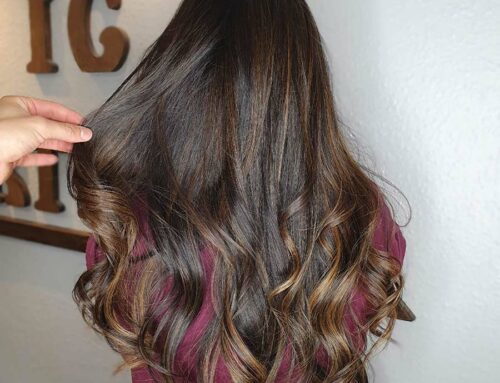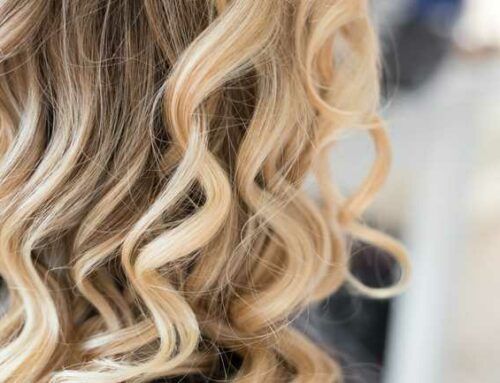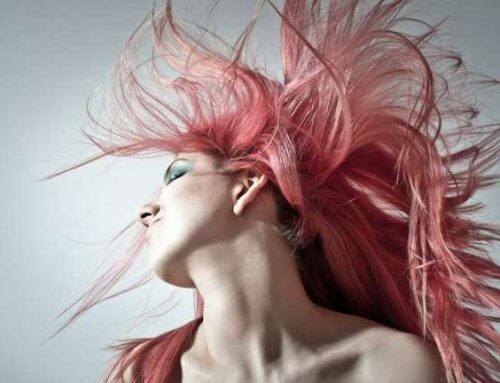If you look in any magazine these days, chances are there’s a celebrity rocking balayage hair. Sun-kissed locks that look fabulous, no matter the haircut or colour. Good news is, you don’t need to be a celebrity to have balayage.
Balayage might be a term you’ve heard but unsure of what it is. That’s ok because we’ve got the answers to 18 questions about balayage so you can walk into your local hairdressing salon and know exactly what you want.
Read more: 6 Stunning Balayage Colours For Brown Hair
1. WHAT IS BALAYAGE?
Balayage is a French word. It comes from the verb ‘balayer” (pronounced bal-ai-ay) to sweep, scan or brush. This technique is meant to mimic a child’s hair that has been lightened on the mid-length and ends by summer sun. Balayage is perfect if you want to refresh your colour but you don’t want to go for a bold colour overhaul.
2. HOW IS BALAYAGE APPLIED?
Balayage is like painting softly on the surface without painting the entire section of hair. Involving very light strokes, colour is swept through small, triangular sections of hair onto a board or foil, resulting in a seamless blend of the highlights and your natural hair colour.
3. HOW LONG DOES THE BALAYAGE PROCESS TAKE?
The balayage effect works on the depth of colour, so time is an important factor. Balayage is a faster process than a full head of foils, so it should take between 30 minutes to 1 hour to apply. Traditional foils take at least an hour.
Achieving a multi-tonal, layered balayage effect can take longer compared to regular colour, but there are benefits to this. It means that you will usually be able to leave a longer time period between hair colour appointments.
4. HOW IS BALAYAGE DIFFERENT TO TRADITIONAL HIGHLIGHTS?
Traditional highlights are when sections of hair are woven and lightened from the root through to the ends leaving some natural hair in between. Specific sectioning techniques are used to make sure hair is evenly highlighted so it doesn’t have a streaky result. The woven sections of hair are usually folded into foils to keep them isolated from the other hair.
Balayage is quite different from traditional highlights. No foil is used and the colour is painted on freehand. The finished result is less uniform than typical highlights. If you’ve ever been worried about having stripy colour after a visit to the hairdressers, balayage is a sure way to avoid that harsh contrast between colours – especially if you’re going blonder.
The colour created is totally bespoke to you and can even be placed in a way to complement or distract attention away from certain features on the face. If you want to make your jaw or cheekbones look more prominent, then using correct sections and shapes within sections can achieve this effect.
5. WHY IS BALAYAGE SO POPULAR?
Balayage has been around since the 1970s, so what’s making it so popular recently? Ever since celebrities were spotted with this look, there has been a surge in interest. We love the way it looks on Ana De Armas.
Balayage is also very popular because it requires little maintenance. It grows out more naturally and re-growth is less obvious. This means that you will have gorgeous looking hair for longer between appointments. What’s more, because you aren’t completely covering all of your hair in bleach or colour, there will less damage and dryness, meaning softer, healthier hair.
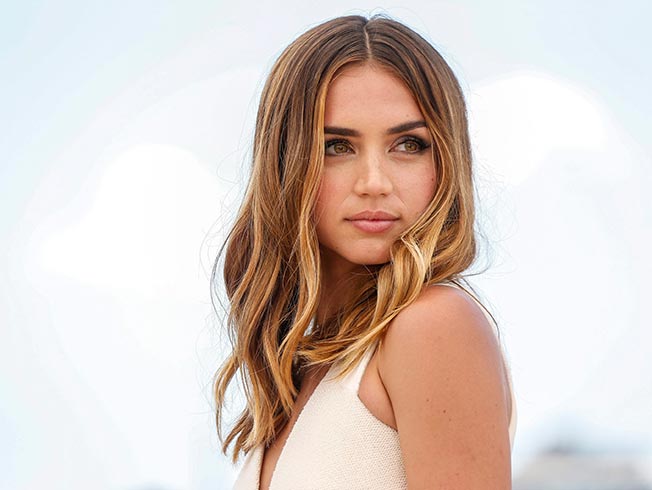
6. DO I NEED TO HAVE LONG HAIR TO HAVE BALAYAGE?
Absolutely not. Just because you don’t have long hair don’t think you can’t achieve the look. No matter how short your hair is balayage can still look fabulous. If you’ve got a pixie style haircut, balayage is easier than highlights. Partial balayage on random strands or highlighting the front tips is a good idea. We love Scarlett Johannson’s blonde balayage.
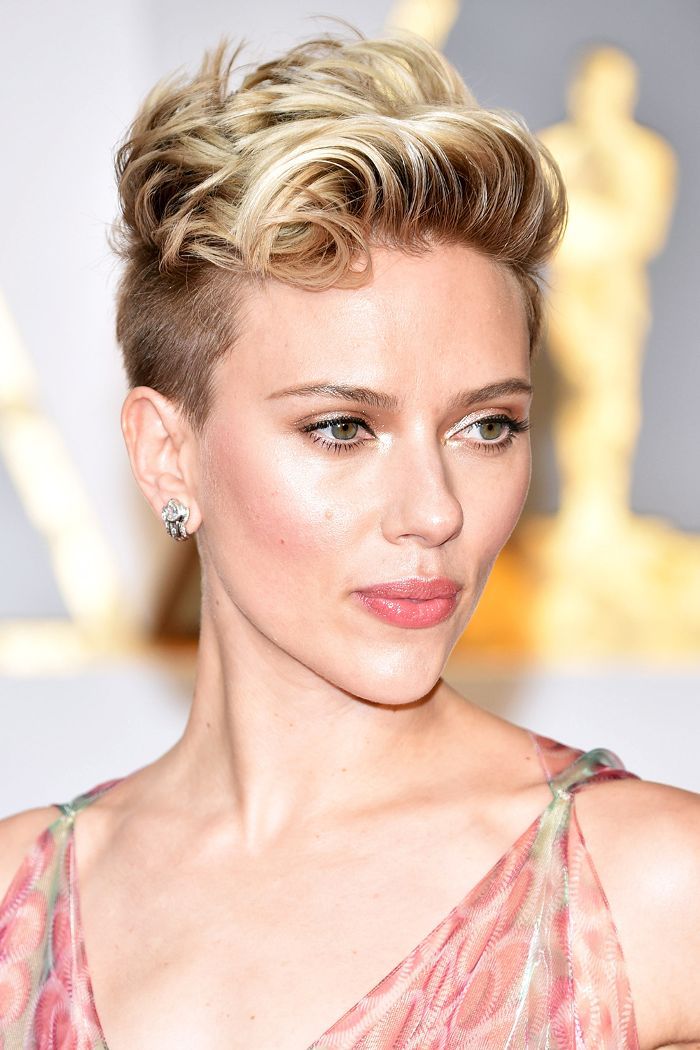
7. WHAT’S A BABYLIGHT?
If you want to make your balayage last as long as possible, then choose a babylight. Babylights are very fine, subtle highlights. If you’ve got very fine hair and want some noticeable highlights but nothing as dramatic as ombre or as thick as balayage, then this is the best option for you.
8. HOW LONG DOES BALAYAGE LAST?
One of the biggest advantages of this style is that it doesn’t require as much upkeep as traditional colour. The blended finish means you can leave longer gaps between your salon appointments, and depending on the style you choose, you can leave it up to four months between top-ups.
9. WHAT’S THE DIFFERENCE BETWEEN OMBRE AND BALAYAGE?
Balayage is a totally blended hair look. There are no lines or blocks of colour and the graduation between shades is much more subtle. Some lengths of the hair are kept darker for a seamless colour finish.
Ombre (meaning “shaded” in French) hair has a more defined contrast between the roots and tips of the hair with colour starting mid-way down the strands. Ombre colour is a more noticeable, statement look compared to balayage. The style works for all colours but it won’t cover grey hair. Ombre will only help blend in the grey to disguise it. So, if you want full coverage for greys, traditional hair colour techniques might work better for you. Ombre is a lot harder to maintain and harder to grow out if you change your mind.
What’s more, ombre is fast going out of style. Balayage is a much more popular option these days.
10. DOES BALAYAGE COVER GREY HAIR?
The answer is “it depends”. If you don’t want to see a “single white hair” then only regular root colouring will take care of that. With balayage and more modern highlighting techniques, the lighter you are naturally, the lighter you want to go with the balayage for best results. Someone who is 100% grey should go with blonde colours and tones. If you have less than 30% or more than 80% grey hair, then balayage will yield the best results. If the percentage of your grey hair falls between these percentages, balayage will still yield great results in terms of colour, however, grey root regrowth will still be a problem.
Bottom line, if only a few greys are present, then balayage may “camouflage” the greys enough for longer times between colouring.
11. DOES BALAYAGE DAMAGE HAIR?
The use of foils and heat to set colour in traditional colouring techniques can over-process the hair and you might end up with your hair looking a little bit brassy. However, most colourists would agree that in a controlled environment, balayage is arguably less damaging.
12. HOW CAN I GROW OUT BALAYAGE?
The great thing about balayage highlights is that they grow out very naturally. This means that there’s no regrowth line, so you don’t have to worry about visiting the salon regularly for touch-ups.
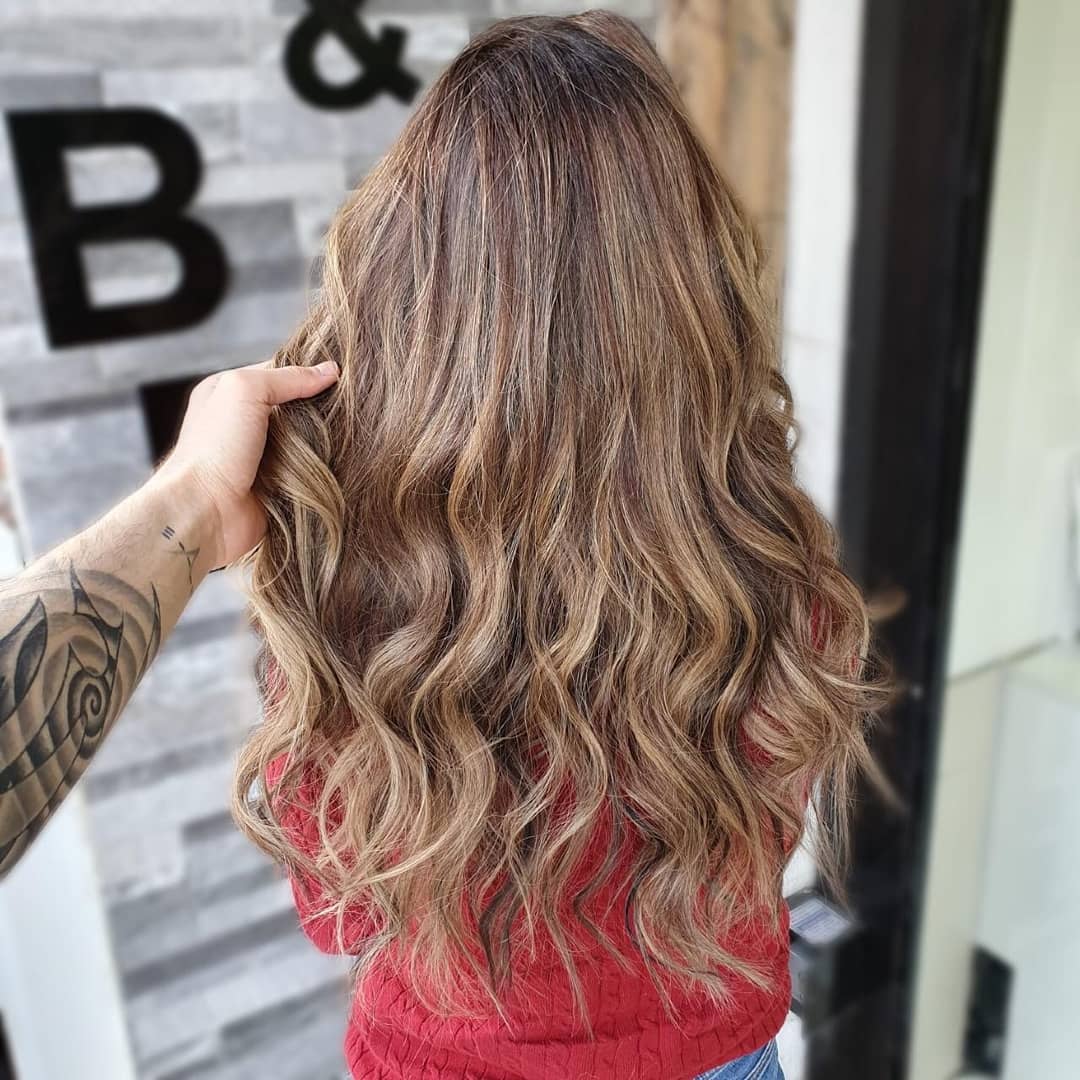
13. HOW CAN I MAINTAIN BALAYAGE HAIR?
Balayage is an investment in your time and money, so you want to make sure that your highlights last for as long as possible. There are a couple of things you can do to maintain the balayage effect.
Regular deep-conditioning treatments such as Olaplex is really going to help keep your hair in tip-top condition by building and restoring broken bonds. If you are going to condition your hair at home, it’s best not to leave conditioner on for longer than 30 minutes because this can leave your hair too soft.
Avoid shampoos with sulphates and conditioners with silicones. Products that contain natural oils like argan oil work best. Head over to your local hairdressing salon and ask them for sulphate-free products that would work best for you. Or check out your local chemist or supermarket. These products are much easier to find these days due to the increase in awareness about how damaging these chemicals are, not only to you but to the environment.
14. IS BALAYAGE BETTER THAN FOILS?
It really depends on the look you want. Balayage lasts longer, and root regrowth isn’t so obvious but the roots will be darker than the ends.
On the other hand, foils give a cleaner less patchy look overall depending on how close the colour is to your natural colour. Foils are best for overall colour, especially if you are going for a complete change.
15. WHAT IS BRONDE BALAYAGE?
If you are looking to achieve graduated highlights from brunette to blonde, the “bronde” balayage is for you.
16. WHAT IS TIGER EYE BALAYAGE?
The tiger’s eye balayage is perfect for brunettes. This effect takes its name from the tiger’s eye gemstone which has a golden to red-brown colour and a silky lustre. This effect will give darker hair an effortless lift.
17. CAN I HAVE BALAYAGE IF I HAVE BROWN HAIR?
Yes, of course. Balayage works on brown hair too. There are endless possibilities and colours to choose from. All you have to decide is if you want to go for a softer look or if you want a pop of colour.
Balayage is perfect for brunettes who want to keep their natural shade, yet crave a new, refreshing look that doesn’t require a lot of maintenance.
18. DOES BALAYAGE LOOK GOOD ON RED HAIR?
Balayage looks amazing on red hair. It’s great if you love your red hair and just want to enhance it with a natural-looking highlight.
However, if you are a redhead and you’d rather not be, then balayage can bring out other tones.
But, a word of caution. Red hair can be stubborn, so the lightening process will almost certainly involve bleach, a high-level peroxide or both. Look for a salon that uses non-ammonia bleach and gentler non-toxic colouring agents. Otherwise, the colour might look great initially, but not when your hair dries out.
Destan Tezel is a head stylist and colour expert at I.C. Partners Hair & Beauty salon, Childs Hill, North London.


